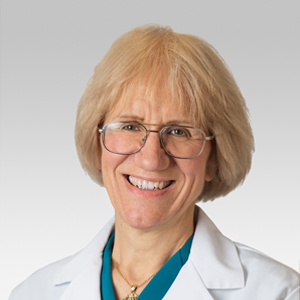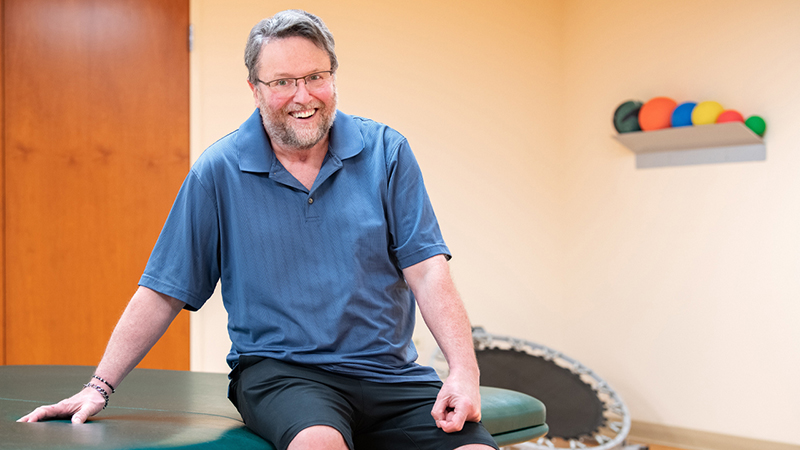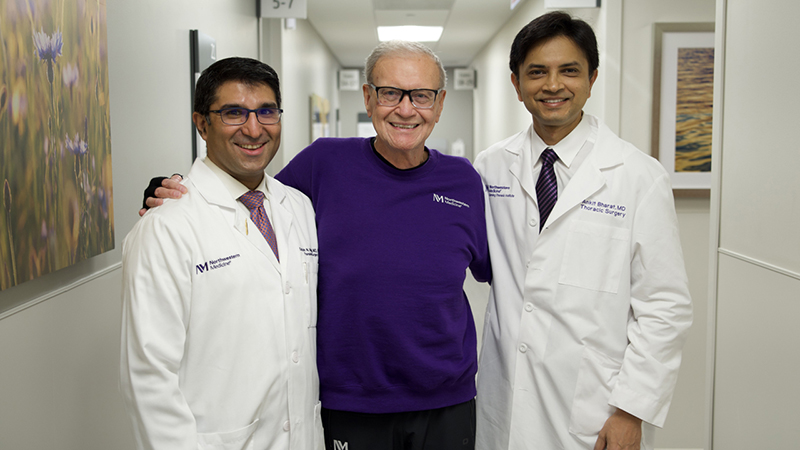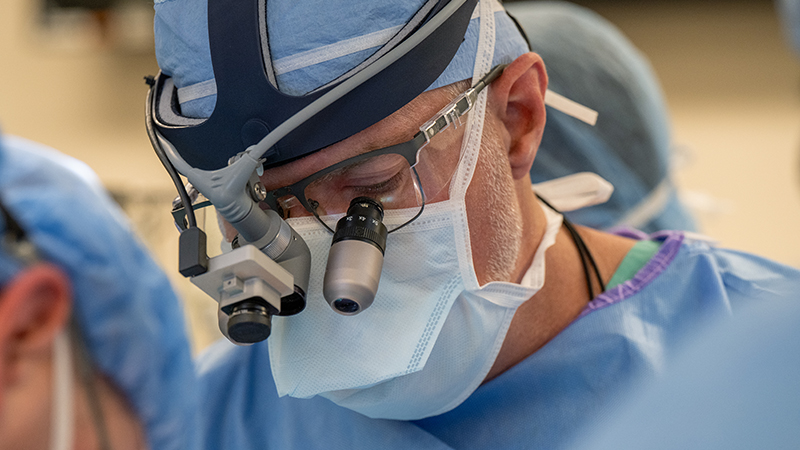Amanda’s Recovery From 2 Traumatic Brain Injuries
Published March 2021
A Story of Family, Faith and Resilience
Each year, about 2.87 million people in the U.S. experience a traumatic brain injury (TBI). And, close to one in every 10 of these people need to be hospitalized. Amanda Fowler Balsan — marketing specialist at Northwestern Medicine Marianjoy Rehabilitation Hospital — is one of them.
In fact, Amanda, 35, has survived not one, but two TBIs. They occurred in the exact same way, 11 years apart to the day.
"Stories like Amanda's show us what resilience looks like, which is something we all need to hear right now," says Ginny Girten, a physical therapist at Marianjoy Rehabilitation Hospital who helped care for Amanda.
I was destined to be where I am today.— Amanda Fowler Balsan
No 2 TBIs Are the Same
A TBI is caused by a hit to the head or an open head injury that disrupts how the brain works. There are many causes, such as falls, sports injuries and car accidents. Both of Amanda's TBIs resulted from car accidents.
TBIs range in severity. Patients can have a mild TBI (called a concussion) or a more severe injury that can lead to a long period of unconsciousness, life-long disability or even death. This type of TBI often causes more bleeding in the brain that requires emergency surgery.
Different TBIs affect different parts of the brain. "With 86 billion brain cells and many different parts of the brain that may be bruised or shaken up, there's an endless possibility of severity and locations of injury," says Northwestern Medicine Pediatric Physiatrist and Neurological Developmental Pediatrician Mary E. Keen, MD, who was instrumental in Amanda's recovery.
Yet, all TBIs have one thing in common: Early detection and treatment are vital to recovery.
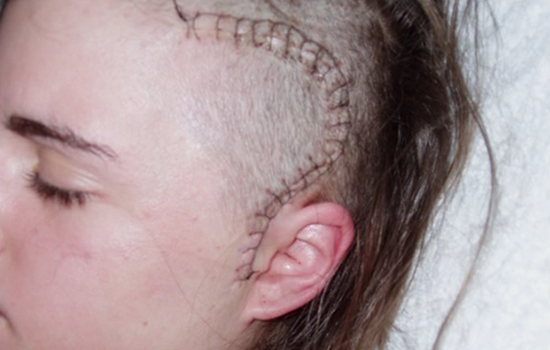
Amanda's First TBI
Following her first TBI on November 21, 2005, Amanda was rescued from the car and rushed into surgery. She was only 19, and her care team gave her less than a 5% chance of survival.
Following surgery, Amanda was unable to speak, swallow or move any part of her body. She spent over a week in intensive care, and had three surgeries. During this time, she was quadriplegic and had pneumonia, a subdural hematoma, a lung contusion, double vision, nerve palsies, and broken bones and teeth.
While recovering at Marianjoy, Amanda relearned how to walk, talk, swallow, balance and even see. "I had every type of therapy imaginable, including balance training, vision therapy and aquatic therapy," says Amanda, who stayed optimistic through it all.
"What I remember about Amanda, even when she was still learning to walk, is how positive, poised and hopeful she was," states Dr. Keen.
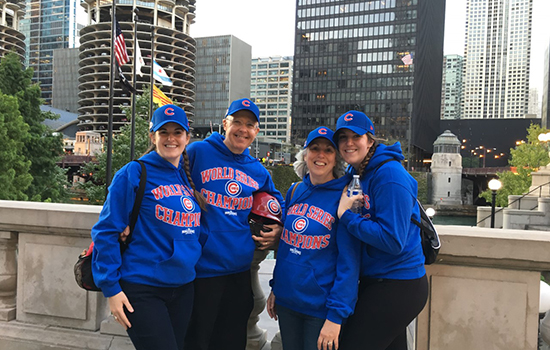 Amanda also had a supportive family behind her. "They kept telling me, 'You are OK. You are safe. You are loved. You are not a burden. And you can do anything you want to do," says Amanda, who notes that she also had faith on her side. "To this day, my mother and I both swear we saw angel wings in the hospital."
Amanda also had a supportive family behind her. "They kept telling me, 'You are OK. You are safe. You are loved. You are not a burden. And you can do anything you want to do," says Amanda, who notes that she also had faith on her side. "To this day, my mother and I both swear we saw angel wings in the hospital."
When she finally went home in late December 2005, Amanda was able to walk, speak, eat and drink. "I still had a long way to go with my recovery, but outpatient therapy got me ready to go back to college in August 2006," Amanda explains.
With perseverance, Amanda graduated from the University of Illinois at Urbana-Champaign with her B.A. and then DePaul University with her M.A., and landed a job as a marketing specialist at Marianjoy. Little did she know that she would have to overcome another hurdle.
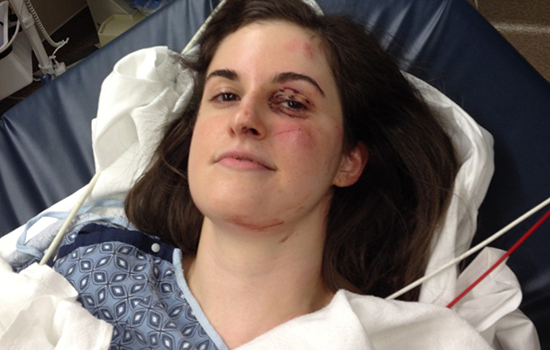 11 Years Later
11 Years Later
On November 21, 2016, Amanda's car was rear-ended, which caused a concussion. Nothing showed up on her CT scan, but Amanda's symptoms, like brain fog, led her to seek care from her neurologist. Amanda, 30 at the time, took a leave from work to focus on her recovery.
During her recovery, Amanda leaned on spiritual care and behavioral health services. "In addition to the physical recovery, I was grappling with this idea of my mortality for a second time on the anniversary of my first accident. I remember thinking, 'Is this supposed to be the day I die?' I was finally able to realize it's just a day that God is paying extra attention to me," says Amanda. "All factors came together to give me miraculous recovery from both injuries."
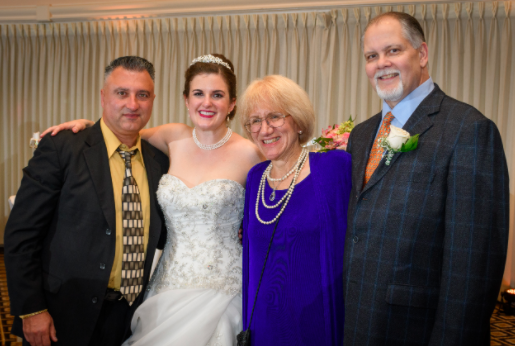
Amanda also met her future husband during this time. "He was a big support, even though he had just met me," says Amanda. With support from her loved ones, employer and care team, Amanda slowly got better, came back to work and got married.
After going to Amanda's wedding, Dr. Keen reflects, "Having journeyed with her and the team through many of the challenges of improving her ability to walk and use her hands to the point that one could hardly know that she ever had a brain injury, it really was a fairytale ending. Although, it is not the end because she's still my friend today."
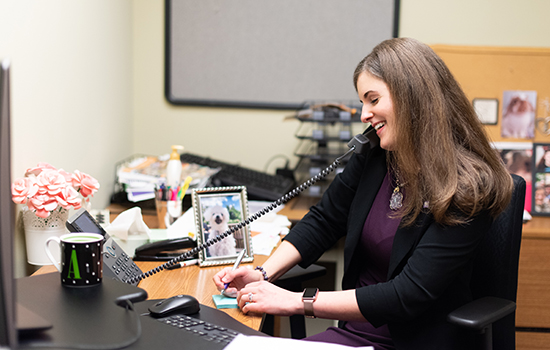
Life After a TBI
Amanda continues to grow and improve her relationship with her brain. She has limitations, like circulation issues, weakness on her left side and slight memory challenges. But, she has never let this hold her back. She uses coping mechanisms, like notetaking and playing the violin, as ways to partner with her brain.
Amanda's TBIs have helped her cherish her unique strengths, and they also grounded her in her purpose. "Northwestern Medicine has helped me to view my disability as an asset, not as a detriment," she explains. "It wasn't until my first accident that I knew I wanted to work in health care and advocate for disability awareness. I was destined to be where I am today."


